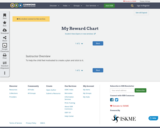
To help the child feel motivated to create a plan and stick to it.
- Subject:
- Early Childhood Development
- Material Type:
- Activity/Lab
- Author:
- CIPPO Egypt
- Date Added:
- 06/19/2022

To help the child feel motivated to create a plan and stick to it.

To help the child recognize their strengths and challenges, and increase their self-awareness and self-esteem.
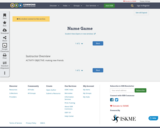
ACTIVITY OBJECTIVE: making new friends
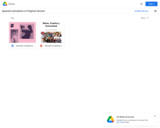
A lo largo de los años, los investigadores encontraron la necesidad de desarrollar teorías de comportamiento que sean específicas de los entornos familiares. Estas teorías fueron desarrolladas por diversos expertos en un sinnúmero de ramas, desde terapeutas familiares hasta gerontólogos y especialistas en desarrollo infantil. En este capítulo hablaremos brevemente sobre seis de estas teorías: el modelo ecológico, los sistemas familiares, el funcionalismo, la teoría del conflicto, el interaccionismo simbólico y las perspectivas psicológicas.
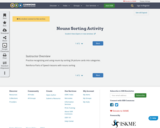
Practice recognizing and using nouns by sorting 24 picture cards into categories. Reinforce Parts of Speech lessons with nouns sorting
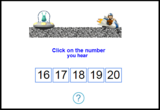
A suite of number recognition games for the whiteboard, tablet or computer. Games provide a rich interactive learning setting.

Students will be able to recognize the names of common occupations.

The Role of OER in Advancing Equity
Short Description:
The overarching goal of the DOERS3 OER Equity Blueprint is to define, unpack, and explain the multiple dimensions of equity and foreground the role of OER in closing equity gaps.
Long Description:
What role can OER play in advancing equity? The overarching goal of the DOERS3 OER Equity Blueprint is to define, unpack, and explain the multiple dimensions of equity and foreground the role of OER in closing equity gaps and provide a blueprint for action. The Blueprint is composed of three sections: Overview, Theoretical Framework, and Research Foundation The Equity Through OER Rubric Case Studies*
Recommended Citation: DOERS3 Equity Working Group (n.d). OER Equity Blueprint. doers3.org. Available at https://pressbooks.cuny.edu/doers3equity/
Word Count: 13119
(Note: This resource's metadata has been created automatically by reformatting and/or combining the information that the author initially provided as part of a bulk import process.)
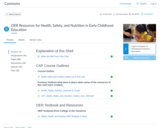
This is shell is a single place to find openly licensed resources developed for Early Childhood Education courses in health, safety, and nutrition. This includes a course outline that resources were developed for, the textbook in English, an assessment library, a video library, and sample modules for an online class. This resource will be updated with additional a complete online class once it is available.
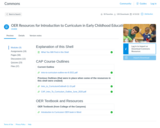
This is shell is a single place to find openly licensed resources developed for curriculum courses in Early Childhood Education. This includes a course outline that resources were developed for, the textbook in English and Spanish, an assessment library, a video library, and sample modules for an online class. This resource will be updated with a complete online class once it is available.
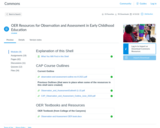
This is shell is a single place to find openly licensed resources developed for Early Childhood Education courses in observation and assessment. This includes a course outline that resources were developed for, the OER textbook in English and Spanish, an assessment library, a video library, and sample modules for an online class. This resource will be updated with a complete online class once it is available.
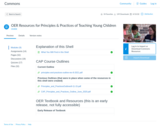
This is shell is a single place to find openly licensed resources developed for Principles and Practices of Teaching Young Children. This includes a course outline that resources were developed for, an early release of the OER textbook, an assessment library, a video library, and sample modules for an online course. This resource will be updated with a complete online class once it is available.
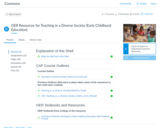
This is shell is a single place to find openly licensed resources developed for Early Childhood Education courses on equity and diversity. This includes a course outline that resources were developed for, the textbook in English and Spanish, an assessment library, a video library, and sample modules for an online class. This resource will be updated with a complete online class once it is available.
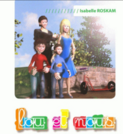
Lou is a young child presenting problem behaviors. At home, at school, or outdoors, Lou’s parents try different methods of correcting Lou’s behaviors, and evaluating their efficacy in the immediate, and longer, term.
The interactive program offers a rich simulation of situations parents and children in such circumstances might face. Whilst studiosly avoiding any suggestion of easily and universally applicable methods, the interactive program invites parents and professionals in training to reflect on the adequacy of their disciplinary and other child-rearing styles, and the impact of stress and fatigue on family functioning, related to environmental variables in their lives. The interactive program also proposes a series of « golden rules » parents and professionals in training can use as helpful guidelines and points of reference in promoting the welfare of their children and enhancing family functioning.
Use of the interactive program, which should always happen when their is professional supervision and accompaniment, by a parent, in a parental couple with or without the involvement of the child concerned, in a group of parents, or by a psychologist in training, contributes to improvement in child-rearing practices, the feeling of parental competence, co-parenting relationships, and communication with the child in question and other children who may be part of the family setting.
The interactive program’s playful and modern approach makes for an indispensable tool for psychologists and family educators working with young children with problem behavior, and their parents.
The interactive program may be used in four languages (English, French, German, and Spanish), and is accompanied by a manual in English and French describing the theoretical and empirical bases for the interactive program and its uses, as well as guidelines for using the video which are especially apt for professionals working in the educational guidance of parents and families.
Standard instructions regarding the training of students in the helping professions are also available on the interactive program. These instructions are aimed at professors in higher education in the domains of family psychology, family education, and cognitive-behavioral therapy. They permit psychologists and other professionals in training to understand how best to use the interactive program and focus its use in the broader context of their working relationships with one another and with families and children.
Lou est un jeune enfant présentant des difficultés de comportement. A la maison, à l’école ou en promenade, ses parents font des choix éducatifs et en évaluent l’efficacité immédiate et à long terme. Le programme interactif se présente comme un simulateur de situations éducatives. Sans jamais induire que l’éducation d’un enfant se réduirait à une recette universelle, il emmène parents et professionnels dans une réflexion à propos de l’adéquation des réponses éducatives en regard des comportements de l’enfant, de l’impact du stress et de la fatigue sur le fonctionnement familial, de l’importance des variables environnementales. Il propose un ensemble de « règles d’or » agissant comme des points de repère. Son utilisation par le psychologue en formation, le parent seul, en couple parental, avec ou sans leur(s) enfant(s), en groupe de parents, accompagné ou non d’un professionnel de la guidance, contribue par ailleurs à favoriser le travail thérapeutique portant sur la fonction parentale, la relation coparentale et la communication avec l’enfant. Son approche ludique en fait un outil indispensable aux psychologues et aux éducateurs familiaux travaillant auprès de jeunes enfants présentant des troubles du comportement et de leurs parents.
Le programme interactif est présenté en quatre langues (français, anglais, allemand et espagnol). Il est accompagné d’un manuel en français et en anglais donnant des indications sur ses fondements théoriques et des conseils d’utilisation à destination des professionnels de la guidance éducative.
Des consignes standardisées relatives à la formation des étudiants sont également disponibles . Elles sont destinées aux professeurs de l’enseignement supérieur et des universités dans les domaines de la psychologie de la famille, de l’éducation familiale et de la thérapie cognitivo-comportementale. Elles permettent d’orienter le travail des psychologues en formation à partir du programme interactif.
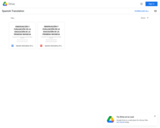
Para proporcionar a los niños un ambiente de aprendizaje seguro y enriquecedor, y para mantener la efectividad del programa, los maestros deben incorporar la observación, la documentación y la evaluación en sus rutinas diarias. Para ser verdaderamente efectivos, los maestros deben desarrollar habilidades y estrategias basadas en las mejores prácticas. En este capítulo, se le presentará información que destaca cómo la observación y la documentación se pueden utilizar como una estrategia clave para garantizar la enseñanza intencional. Examinará los pasos iniciales que debe seguir para convertirse en un observador experto y reflexionará sobre cómo documentar objetivamente las interacciones que ve y las conversaciones que escucha. Es importante tener en cuenta que convertirse en un observador experto requiere tiempo y práctica, y además aprenderá que incorporar la observación, la documentación y la evaluación en sus rutinas habituales y tareas diarias requerirá una consideración cuidadosa.

The Observation, Assessment, and Documentation module of the Early Education and Care in Inclusive Settings: ECE Core Competencies by Mary Lu Love (a UMass Boston OpenCourseWare course) provide an audio presentation, PowerPoint slides, list of supplemental readings, and self-assessment.

Early Head Start’s publication, Observation: The Heart of Individualizing Care provides information on what observation is, goals of observation, using observation, setting up systems to support observation, reflecting on observation, responding based on observation. Although it is targeted toward use with infants and toddlers, it provides information that can be reused, revised, and remixed to address observation more broadly as it is in the public domain.

Word Count: 33978
ISBN: 978-1-990641-93-0
(Note: This resource's metadata has been created automatically by reformatting and/or combining the information that the author initially provided as part of a bulk import process.)
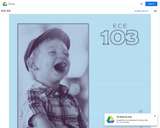
ECE 103: Observation and Assessment
Focuses on the appropriate use of assessment and observation strategies to document development, growth, play and learning. Explores recording strategies, rating systems, portfolios, and multiple assessment tools.
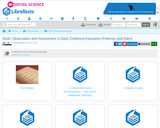
To provide children with a safe and nurturing learning environment and to maintain program effectiveness, teachers must incorporate observation, documentation and assessment into their daily routines. To truly be effective, teachers must develop skills and strategies that are grounded in best practices. This textbook covers topics such as observation methods and techniques, implicit bias, ethics of observation, quality, analyzing data, monitoring, screening and evaluation, meaningful curriculum, and using documentation and assessment to communicate with families.